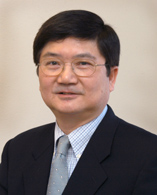| Location: Home>News>Upcoming Events |
| 04.11: Forum on Environment and Ecology: Filtration Solutions to Mitigate PM2.5 Pollutants in Urban Air |
|
|
Title: Filtration Solutions to Mitigate PM2.5 Pollutants in Urban Air Speaker: David Y.H. Pui Member of the National Academy of Engineering (NAE) Distinguished McKnight University Professor LM Fingerson/TSI Chair in Mechanical Engineering Director of the Particle Technology Laboratory Mechanical Engineering Department University of Minnesota Time: 10:30, Monday, April 11 Place: Lectural Hall, Environmental Sciences Building, RCEES About the speaker:
David Y.H. Pui Professor David Y. H. Pui is a Member of U.S. National Academy of Engineering (NAE) and Director of the world-renowned Particle Technology Laboratory at the University of Minnesota. He is also the Director of the Center for Filtration Research (CFR) with 18 leading international filtration companies as members. He has a broad range of research experience in aerosol and nanoparticle science and filtration technology and has over 255 journal papers and 26 patents. He has developed several widely used commercial aerosol instruments. Dr. Pui has received many awards, including the Max Planck Research Award (1993), the Humboldt Research Award for Senior U.S. Scientists (2000), the Fuchs Memorial Award (2010) -- the highest disciplinary award conferred jointly by the American, German and Japanese Aerosol Associations, and the Einstein Professorship Award (2013) by the Chinese Academy of Sciences (CAS). Abstract of Presentation: PM2.5 (Particulate Matter less than 2.5 µm) was established by the U.S. Environmental Protection Agency in 1997 as the standard method for sampling fine particles. The Particle Technology Laboratory (PTL) has developed many instruments and samplers to perform atmospheric measurements, which helped to establish the PM2.5 standard. The effects of PM2.5 pollutants on the atmospheric visibility and human health will be addressed. The two major PM2.5 sources in China have been identified to come from coal burning and vehicle emissions. Filtration is the principal means to control PM2.5 pollutants. The Center for Filtration Research (CFR) at the University of Minnesota, consisting of 16 leading international filtration companies, was established to find filtration solutions to mitigate PM2.5 and other environmental pollutants. Several large-scale cleaning systems will be presented. A Gasoline Particulate Filter (GPF) for Gasoline Direct Injection (GDI) engines has been developed to meet Euro 6 standard scheduled to be implemented in 2017. Two disruptive innovations, namely, the Solar-Assisted Large-Scale Cleaning System (SALSCS) and the Freeway Air Cleaning System (FACS), are proposed to mitigate PM2.5 pollutants in urban air. An integrative approach, from collaboration among academia, government, and industries, can effectively manage and mitigate the PM2.5 pollutants, particularly in China. |
